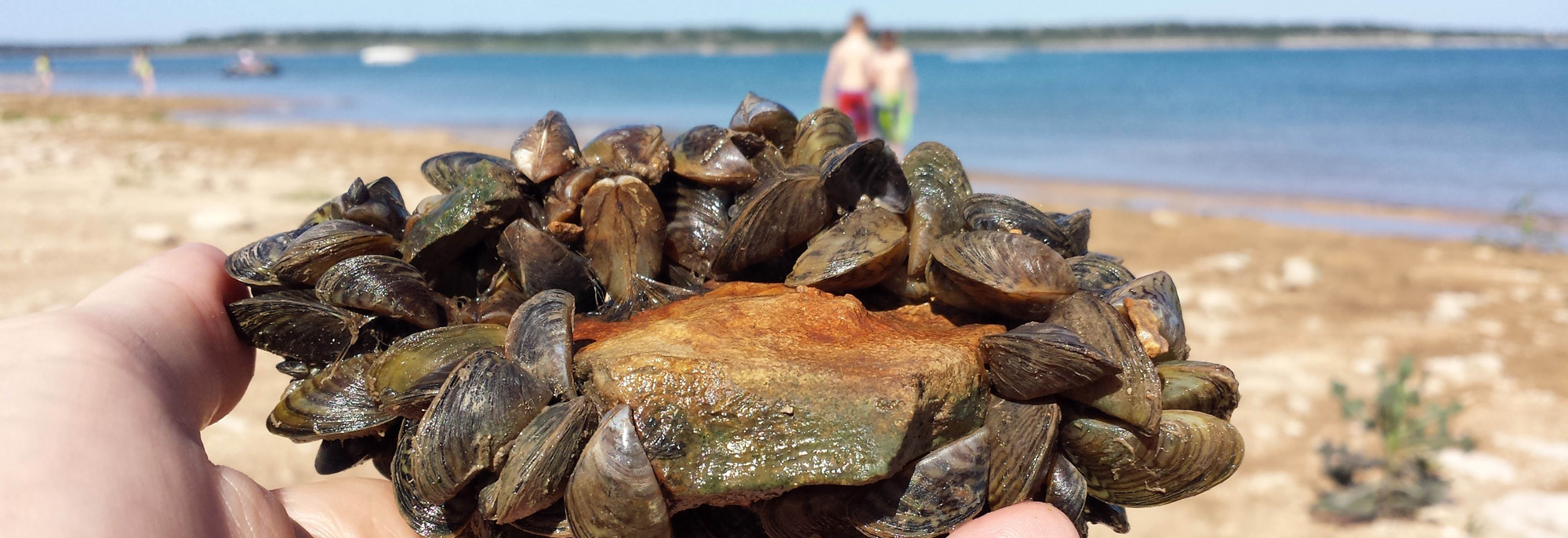Invasive Mussel Monitoring
Zebra and quagga mussels are highly invasive freshwater mollusks, introduced to the United States in the late 1980s. These small mussels grow to only approximately 1.5 inches long but are considered one of the most destructive invasive species in North America. Invasive mussels—unlike our native mussels—can attach to nearly any hard surface and form dense colonies. Water utilities, hydroelectric, and any other facilities using raw surface water can be severely impacted as these mussels invade, colonize, and clog intakes requiring perpetual, costly maintenance and repairs. Their razor-sharp shells cover shorelines and docks, requiring lake visitors to wear shoes and take care to avoid being cut. Invasive mussels also filter large amounts of plankton out of the water, competing with native filter feeders for resources and having bottom-up impacts on the lake ecosystem.
Invasive mussels’ microscopic larvae float freely in the water until they settle and can be carried between lakes in residual water trapped in boats. Similarly, adults attached to boats or barges can survive for weeks out of water under certain conditions and be moved to new lakes. These characteristics have allowed zebra mussels to spread rapidly in Texas. Since they were first found in Lake Texoma (2009), invasive zebra mussels have infested many Texas water bodies. Quagga mussels have also now been found in one Texas water body, Lake Amistad.
Twice per year — in spring and fall — biologists from TPWD and numerous partner agencies monitor nearly 50 Texas water bodies for early detection of invasive mussels. Plankton samples are collected and analyzed using microscopes with cross-polarized filters to search for the microscopic larvae. Checks of settlement samplers and shoreline surveys are also implemented periodically to survey for settled mussels. The partner group also monitors status of lakes where zebra or quagga mussels have been detected very recently as well as monitoring population dynamics in some infested lakes.
Learn where invasive mussels are currently found in Texas.
